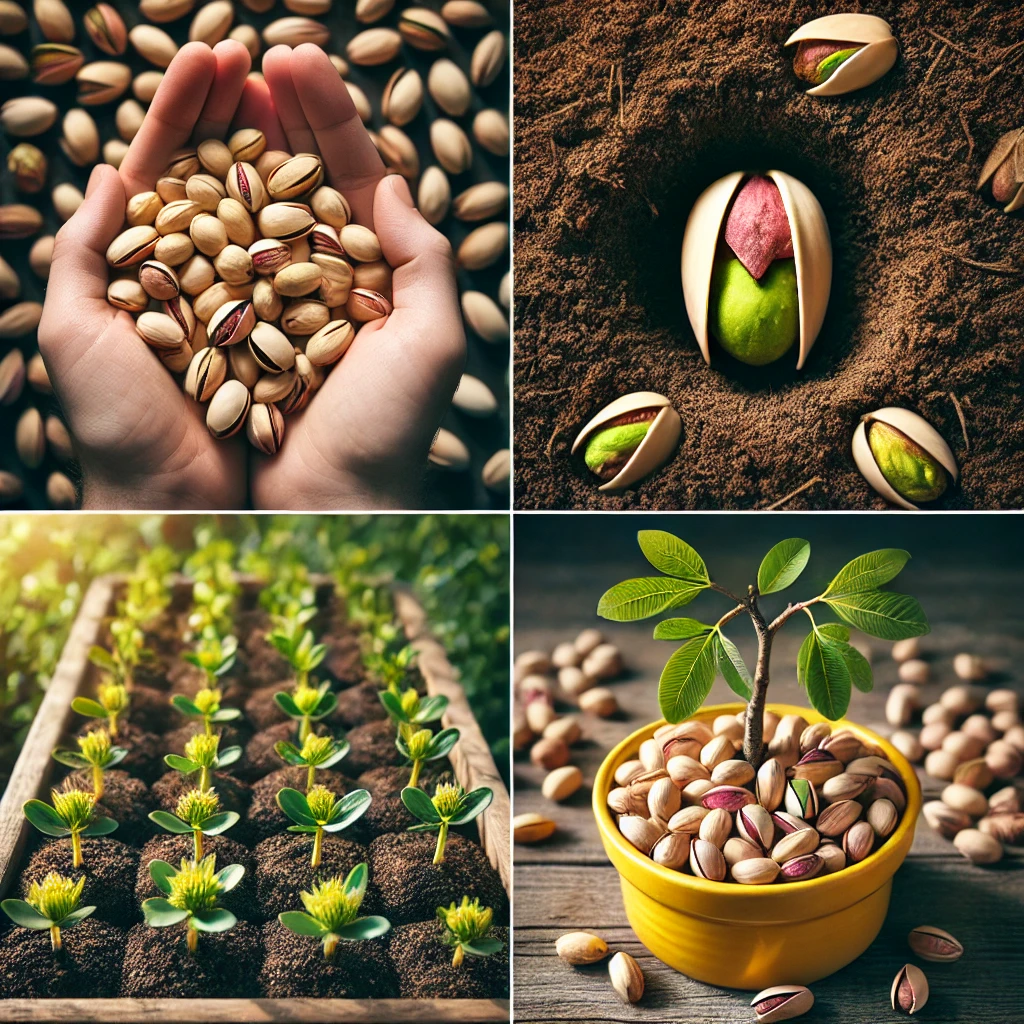Growing pistachios from seed at home is an exciting yet challenging task that can yield rich rewards. Here’s a comprehensive guide to help you successfully cultivate pistachios right in your backyard or greenhouse.
1. Getting Started:
- Selecting Fresh Seeds: Begin with high-quality, untreated, and unroasted pistachio seeds. Ideally, these should come from raw pistachios or a reliable nursery. Avoid processed seeds as they won’t germinate.
- Stratification Process: Pistachio seeds require cold stratification to germinate. Place the seeds in a bag filled with moist sand and refrigerate them for 6-8 weeks to mimic winter conditions and break dormancy.
2. Germination:
- After stratification, plant the seeds in a pot with well-draining soil, about 1 inch deep. Keep the soil evenly moist, ensuring it doesn’t become waterlogged. Maintain a warm temperature around 70°F (21°C) to encourage germination, which can take about 4-6 weeks.
3. Transplanting:
- Seedlings: When the seedlings grow to 4-6 inches tall, they can be transplanted into larger pots or directly into the garden. If you’re growing them indoors or in a greenhouse, choose large, deep containers to accommodate the roots.
- Outdoor Planting: If planting outdoors, ensure the soil is well-prepared, and choose a spot with plenty of space for the tree to grow.
4. Location and Soil Requirements:
- Location: Pistachio trees thrive in full sunlight, so select a location that receives at least 6-8 hours of direct sun daily.
- Soil: They prefer alkaline, well-draining soil. Adding organic compost can improve soil structure, ensuring better drainage and nutrient retention.
5. Caring for Pistachio Trees:
- Watering: While pistachio trees are drought-tolerant once established, they need regular watering during the early stages. Water the soil when it dries out, but avoid overwatering, as waterlogged conditions can cause root rot.
- Pruning: Regular pruning is essential for removing dead or diseased branches, promoting healthy growth, and maintaining the tree’s shape.
- Fertilization: Feed your pistachio trees with a balanced fertilizer, focusing on zinc-rich options, as pistachios have a high zinc requirement for healthy development.
6. Pollination:
- Pistachio trees are dioecious, meaning there are separate male and female trees. To produce nuts, you need at least one male and one female tree. It’s advisable to plant multiple seeds to ensure both genders are present for proper pollination.
7. Harvesting:
- When to Harvest: Patience is key, as pistachio trees usually begin bearing fruit in their 5th to 7th year. The nuts are ready for harvest once the shells split open and turn a reddish-brown color.
- Post-Harvest: Remove the outer hulls, then allow the nuts to dry in a cool, shaded area for several days. This helps preserve the pistachios for storage and enhances their flavor.
8. Pest and Disease Management:
- Pests: Keep an eye out for pests such as aphids, caterpillars, and mites. Organic pest control methods, like neem oil, can help protect your trees without harmful chemicals.
- Diseases: Watch for diseases such as botryosphaeria panicle and shoot blight. Proper spacing between trees, good air circulation, and regular pruning help reduce disease risks.
Conclusion:
Growing pistachios from seed is a long-term project that demands patience and consistent care, but the rewards are well worth the effort. Whether you’re a seasoned gardener or a beginner, cultivating pistachio trees allows you to enjoy homegrown nuts and develop a deeper connection to nature. With attention to detail and a little patience, your pistachio trees can eventually bear fruit, offering you a satisfying harvest and the pleasure of nurturing a resilient crop.
